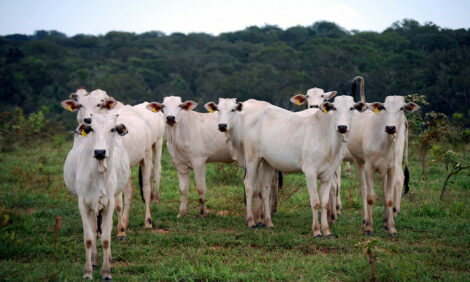



New Zealand Becoming a 'Mini Europe'?
NEW ZEALAND - New Zealand remains a land of opportunity but is not as cheap as it used to be, says an English farming couple.As the world’s emerging dairy markets in Asia, the Middle East and South America bring a new era for milk markets, New Zealand enjoys huge export success.
This has brought the relentless conversion of holdings into dairies as sheep farming, to a certain extent, has lost out.
Robert and Rachel Morris, originally from the north of England, moved to New Zealand’s South Island to benefit from the rapid growth in the country’s herd size, herd number and export volume.
At over 90 per cent of production, the export market represented a huge opportunity for the Morris’s who felt a little squeezed out by the lack of options in dairy farming back home.
“The main reason I chose to live over here was for the stepping stones to progress and run my own business,” explains Rob. “All I could hope for back in England was to be a herd manager.”
Rob’s new style of farming is very different from the year-round, Holstein-Friesian, 9,000 litres and more per lactation herd he learnt his trade with back in North Yorkshire.
Much of New Zealand’s pasture-based farming relies on block calving and results in perennial cash flow problems around June and July.
This is the middle of winter for the Southern Hemisphere and a time when herds often leave farm for fodder crops.
Much coverage has been given to the low-input ‘affordability’ of such production, although an increasing awareness of nature’s fragility is changing this.
Environmental policy now sees outdoor winter grazing in a different light, with run-off, compaction and water quality all reasons why winter housing is preferred by some.
Equally, while a mostly temperate climate supports intensive grazing, pressure from drought, particularly further north, has brought the issue of water supply into focus.
Rob says that without irrigation, ‘you are fighting a losing battle’, and after a serious initial investment, more efficient sprayer pay dividends on water bills and grass growth predictability.
Rachel jokes that elements of the farming community worry New Zealand could turn into a ‘mini-Europe’.
Unfortunately, the answer means paying for buildings to house cows inside.
Rob explains that many farmers, upon finishing their sheds, will want a yield lift. This will require more Holstein genetics – more expense.
Higher yielding cows will also require more supplements, Rob fears, although he, like many others, is sticking with pasture.
Michael Priestley
News Team - Editor
Mainly production and market stories on ruminants sector. Works closely with sustainability consultants at FAI Farms



